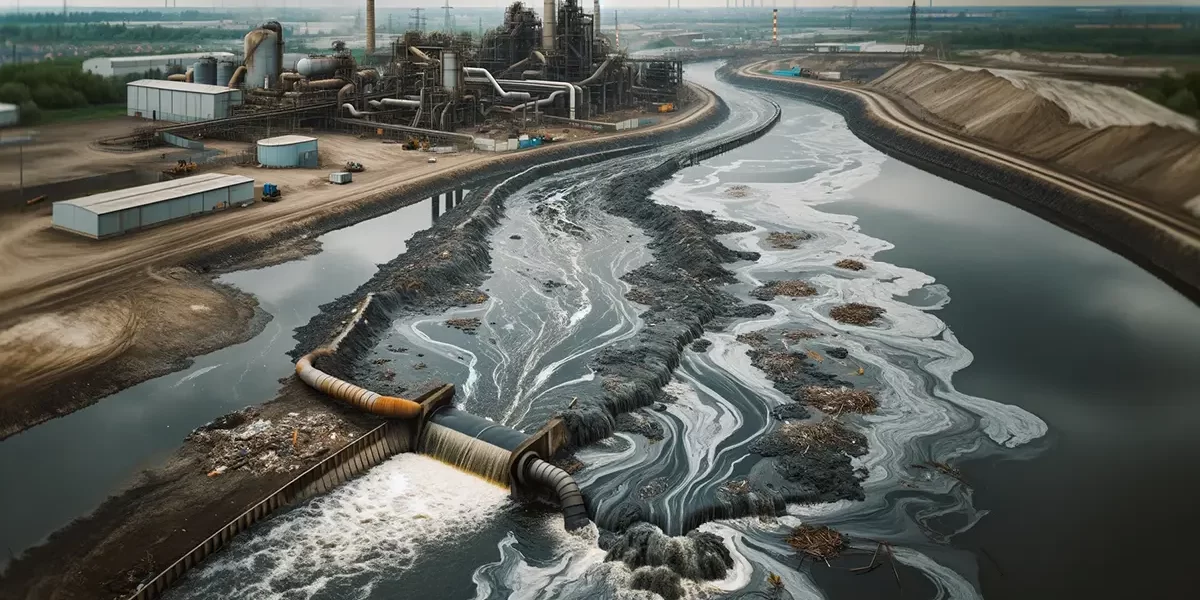Wastewater treatment is essential for protecting public health and preserving the environment.
The increasing instances of pollution in the UK’s rivers and waterways due to the discharge of untreated wastewater from sewage treatment plants are causing significant environmental harm.
These discharges introduce a variety of pollutants, including pathogens, chemicals, and organic waste, into aquatic ecosystems, disrupting the natural balance and harming wildlife. This ongoing issue highlights the urgent need for enhanced regulatory oversight and the adoption of more effective wastewater treatment solutions to safeguard the UK’s waterways.
Traditionally, treatments such as UV irradiation and peroxide use have been common in wastewater disinfection. However, the rising complexity of regulatory compliance and the demand for more effective and environmentally friendly alternatives has driven the exploration of new treatment options. Chlorine Dioxide emerges as a compelling solution, offering a combination of efficacy, safety, and environmental sustainability.
Why Treat Wastewater?
Before discussing the specifics of Chlorine Dioxide use, it’s crucial to understand why treating wastewater is imperative. Untreated or inadequately treated wastewater contributes to water pollution, spreading diseases and harming aquatic life. Effective treatment helps remove harmful pathogens and toxic compounds, ensuring water released back into the environment does not pose a health threat or ecological damage.
Chlorine Dioxide as an Alternative Treatment
Chlorine Dioxide is recognised for its potent disinfectant properties without some of the drawbacks associated with traditional methods:
- Low Cost and High Efficiency: Chlorine Dioxide is less expensive than other treatments like UV and peroxide while also highly effective at lower doses. This makes it a cost-effective solution for many wastewater treatment facilities.
- No Toxic By-products: Unlike traditional chlorination methods, which can produce harmful chlorinated by-products, Chlorine Dioxide does not leave behind toxic residues. This aspect is crucial in meeting environmental regulations and protecting wildlife.
- Effectiveness in Various Conditions: Chlorine Dioxide performs well in turbid waters where UV systems might be less effective. It also requires minimal maintenance, reducing operational costs and downtime.
- Odour and Corrosion Control: One of Chlorine Dioxide’s unique advantages is its ability to eliminate odours and control sulphide-producing bacteria, often the culprits behind odour complaints and infrastructure corrosion in wastewater systems.
- Environmentally Friendly Decomposition: After its action, Chlorine Dioxide degrades into simple salts, which are harmless to the environment. This degradation process minimises the disinfection process’s ecological footprint.
Implementation and Technology
Companies like Scotmas are at the forefront of implementing robust Chlorine Dioxide disinfection systems. These systems are effective in treating wastewater and come equipped with features like onboard data logging and control mechanisms. Such features facilitate environmental auditing and ensure compliance with stringent environmental standards.
A Paradigm Shift in Wastewater Treatment
Chlorine Dioxide represents a paradigm shift in wastewater treatment technology. Its ability to provide adequate disinfection without traditional methods’ associated environmental and health risks makes it an optimal solution for modern wastewater treatment challenges.
As the world moves towards more sustainable and cost-effective treatment methods, chlorine dioxide is vital against water pollution and its consequential threats to public health and environmental integrity. For wastewater treatment facilities, adopting Chlorine Dioxide technology helps them comply with evolving regulations and plays a significant role in fostering sustainable operational practices.
Please contact our team if you are interested in exploring how chlorine dioxide can be integrated into your treatment processes to meet and exceed environmental treatment goals.






